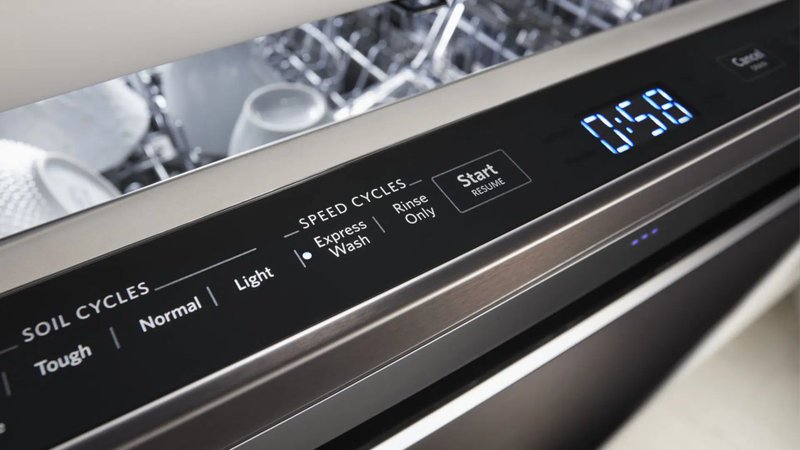
Understanding the KitchenAid F1 Error Code
The F1 error code typically indicates a problem with the touchpad or control board of your KitchenAid dishwasher. Picture your dishwasher’s control panel as the brain of the appliance. When everything is working well, the brain communicates effectively with the other parts to ensure your dishes come out sparkling clean. However, when it displays the F1 code, it’s like the brain is sending a distress signal.
This error can be caused by several things. Sometimes it’s as simple as moisture finding its way into areas it shouldn’t be, causing the control panel to act up. Imagine spilling a cup of water on your laptop’s keyboard—there’s a good chance it might start doing weird things, right? The same logic applies here. Other times, the issue might be a malfunctioning control board, which could require a bit more technical knowledge to fix properly.
So, what should you do if you see this code? First, it’s crucial not to panic. In most cases, the dishwasher won’t pose any immediate danger, but ignoring the problem might lead to bigger issues down the line. It’s wise to troubleshoot the issue as soon as possible. Although the F1 code might not render your dishwasher entirely inoperable, understanding what’s causing the error and addressing it can help avoid further complications.
Safety Concerns: To Use or Not to Use?
You might be wondering, “Is it safe to continue using my dishwasher with the F1 error code showing?” Generally speaking, it’s best to err on the side of caution. The F1 error is primarily an indication that something in the electronic system isn’t functioning at its best. Using the dishwasher while it’s not performing optimally can potentially lead to inefficient cleaning, and in rare cases, could affect other components of the appliance.
Think of it like driving a car with a warning light on—it might still run fine for a while, but without addressing the root cause, you risk long-term damage. With dishwashers, continuous use despite the error could lead to more significant issues, such as the failure of other crucial parts or even electrical hazards.
In terms of immediate safety, there’s typically no risk of fire or electrical shock from the F1 error, but when dealing with electrical appliances, it’s always better to be proactive. The best course of action is to diagnose the issue promptly and consult with a professional if you’re not comfortable handling it yourself.
What Can You Do When Faced with an F1 Error?
So, you’ve got the F1 error code blinking like a neon sign on your KitchenAid dishwasher—what now? First, try a basic reset. Just like rebooting your computer when it’s misbehaving, turning the dishwasher off and then back on again can sometimes resolve minor glitches. Unplug the dishwasher or switch off the circuit breaker, wait a few minutes, and power it back on.
If a simple reset doesn’t do the trick, it might be time to dig a little deeper. Inspect the control panel for any signs of moisture or damage. Remember the laptop analogy? Ensuring the buttons and touch controls aren’t wet or sticky can help eliminate one potential cause of the error. Sometimes, gently cleaning the panel with a dry cloth can make a difference.
If these steps don’t solve the problem, your next best step is to consult the manual or contact KitchenAid customer support. A professional technician can provide a more thorough diagnosis and address more complex issues, like a faulty control board. By taking these actions, you ensure that your dishwasher remains in top condition and prevent future headaches.
Preventive Measures to Ward Off Future Error Codes
Nobody wants to see error codes pop up repeatedly. The good news is, there are steps you can take to prevent the F1 code from appearing again. Regular maintenance is key. Just like you would for a car, periodic check-ups can keep your dishwasher running smoothly. Cleaning the filter, ensuring the spray arms are free of clogs, and keeping the interior dry and clean are simple actions that make a big difference.
Another smart move is to familiarize yourself with your dishwasher’s manual. It’s packed with useful information tailored to your specific model, including troubleshooting tips and preventive maintenance guides. By knowing your appliance inside and out, you’re better equipped to handle any issues that might arise.
By staying proactive, you not only extend the lifespan of your KitchenAid dishwasher but also enjoy the peace of mind that comes with knowing your household appliances are safe and functioning correctly. So, the next time you see that F1 error, you’ll know exactly what to do.